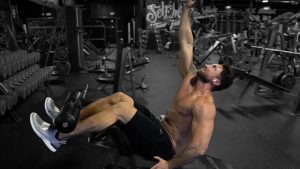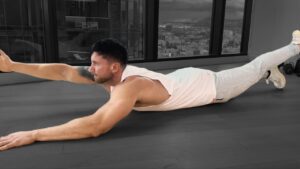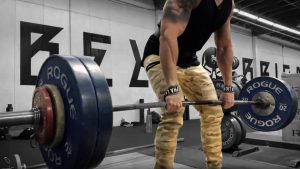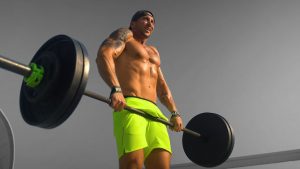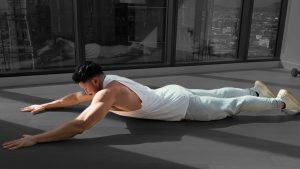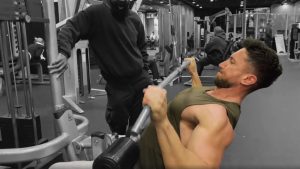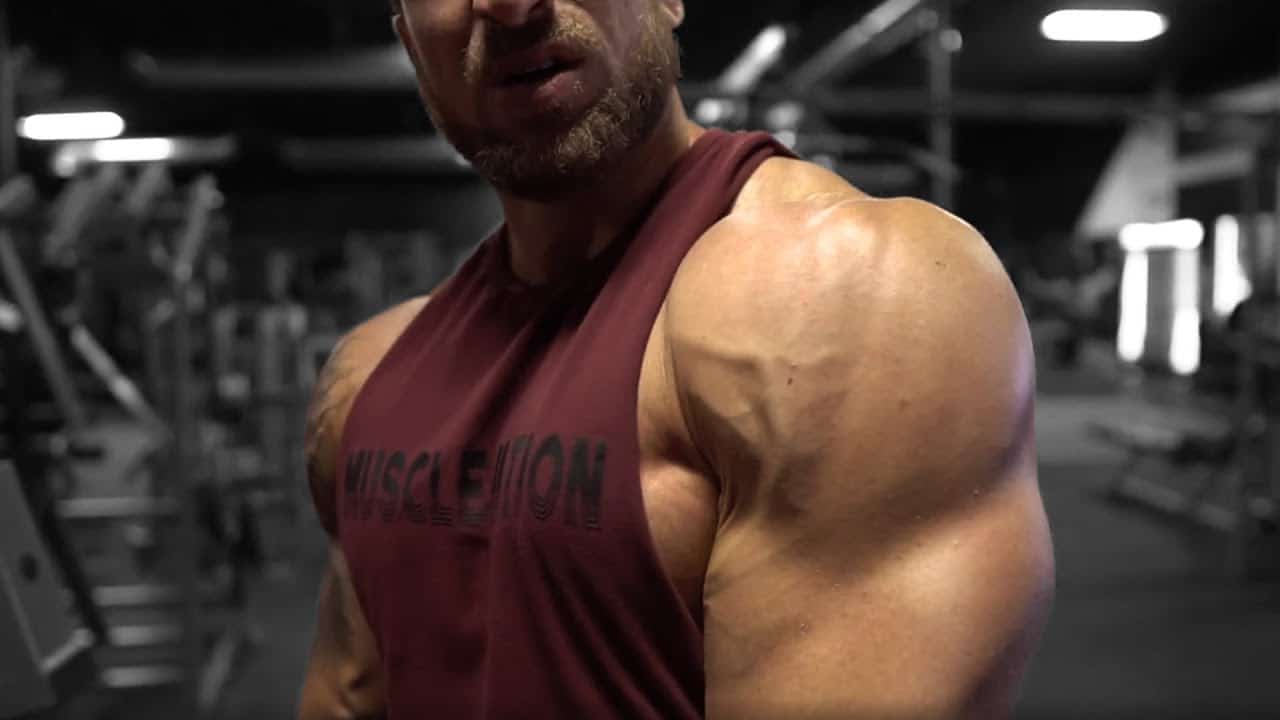
Few things are as impressive on the male physique as fully developed, rounded, and striated shoulders. Whether you’re in a tank top, t-shirt, or business suit, those boulder shoulders will provide that classic broad look of rugged power. When it comes to achieving full deltoid development, however, most guys are severely lagging in one area - the rear delts.
Today, I’m going to break down for you the single best movement that you need to be doing to ensure that your rear delts are not the weak link in your upper body development. That movement is the cable rear delt fly.
Cable Rear Delt Fly Execution
- 1Stand in front of a double pulley cable machine. Set the pulleys so that they are at the height of your head.
- 2If the pulley width is adjustable, set them so that the cables are at a 45 degree angle to your body.
- 3Grab the handles in a hammer grip (palms facing each other). In the starting position, your hands should be in line with your sternum and extended in front of you.
- 4Extend your arms out and down so that they end in line with your waist.
Targeting the Rear Delts

Your deltoids consist of three heads. They each have different functions, though some of them overlap. Each head also has a different origin and insertion muscle fiber points. This makes the shoulders unique among the skeletal muscles that are commonly worked in the gym in that they require different movements to develop each of the heads.
To discover which is the best exercise to target the posterior, or rear, head of the deltoids, we need to identify its origin and insertion points along with its anatomical function.
The rear deltoid originates on the upper ridge of the scapula and it inserts on the deltoid tuberosity of the humerus. In layman’s terms, the muscle fibers run from the upper part of the rear mid-shoulder to the top of the arm.
The main function of the rear delts is to pull the upper arm back. It also assists in the external rotation of the upper arm.
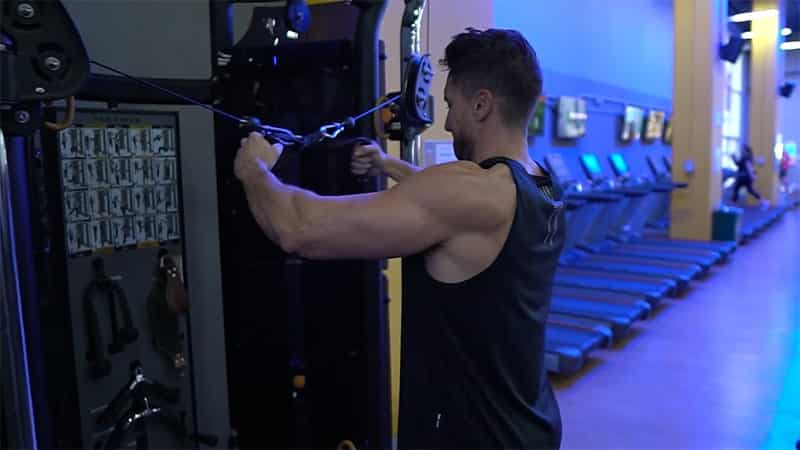
The muscle fibers of the rear delts run diagonally at about a 45-degree angle. This is the ideal angle that a resistance should travel in order to maximally activate the muscle. The movement that would result would have the upper arm starting at the level of the sternum then traveling back and down to the side. From the front, this action should represent an upside-down ‘V’. As we have seen in the execution section above this is precisely what the cable rear delt fly does.
Many popular rear delt exercises have the arms up higher than when you do the cable rear delt fly. In the rear delt machine fly (also called the reverse butterfly), the upper arms are actually perpendicular to the torso. The same thing applies to most dumbbell versions of the rear delt fly. However, this does not follow either the direction of the muscle fibers or the natural anatomical movement of the rear deltoid, which is down and back. Moving the arms perpendicularly back rather than down and back is also a less natural movement.
Rear Delt Training Benefits
Training the rear delts consistently with the cable rear delt fly (ie. at least once per week) is essential to the full aesthetic development of the shoulders. They provide that full, rounded look that is often missing. A lot of guys have fully developed front delts as a result of all the pressing exercises they do but have a total lack of development in the back portion of the shoulders.

Apart from the aesthetics, neglecting to work the rear delts will also result in a huge imbalance between the three heads of the deltoids. This will lead to all sorts of functional muscle problems. The most noticeable of this is poor posture. This is evidenced by rounded shoulders and a constant stoop. This effect is made worse by the many hours each day that most people spend hunched over a computer screen.
When you work the rear delts with the cable rear delt fly you are able to counter the poor postural effects of the modern lifestyle. This exercise, along with those for your trapezius, core, and lats, will help to pull your shoulders and upper back into its natural alignment.
Other Exercise Options
The double cable pulley machine is the ideal option to perform the cable rear delt fly exercise to optimally work the posterior deltoids. The reality is, however, that not everyone will have access to this machine. Most gyms will, at best, have one double pulley cable machine and most of them will not allow you to adjust the distance between the two pulleys. Getting onto that single machine can be a real challenge, especially if you’re hitting the gym during the peak morning or evening hours.
The following exercises are not as good as the cable rear delt fly but they are a decent second-best option if you cannot get to a double cable pulley machine.
Incline Supine Rear Dumbbell Raises
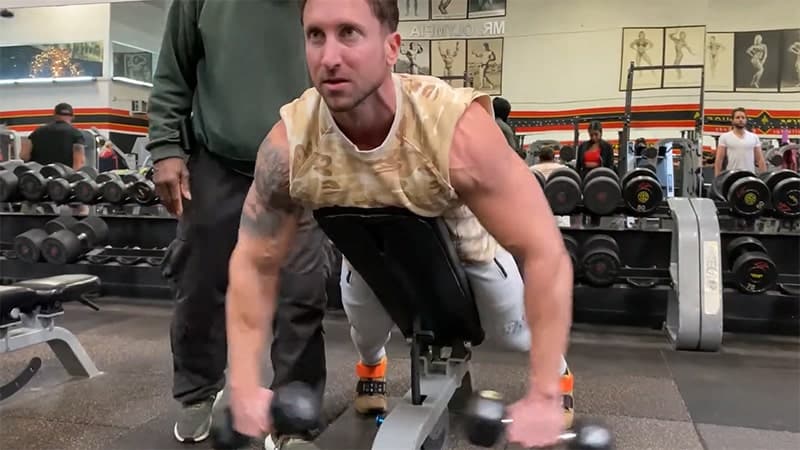
Set up an incline bench to a 45-degree angle. Lie face down on the bench with a light pair of dumbbells in your hands, hanging down over the ends of the bench. In the start position, your palms should be facing each other. With your elbows slightly bent, move your arms out to the side and down. In the top position, twist your wrists so that your palms are facing toward the floor. Hold this top position for a second and then slowly lower to the start position.
Lying One Arm Dumbbell Rear Deltoid Raise
Lie on the floor on your right side with your feet stacked one upon the other. Your right arm should be extended out at a 30-degree angle to your body on the floor. Hold a light dumbbell in your left hand and hold it out straight in line with your chest. Grip the weight with a palms-down grip so that one end of the dumbbell is resting on the floor.
Now bring your arm down and out at about a 45-degree angle. This will follow the natural anatomical movement of the rear delts and the direction of the muscle fibers.
Bent Over Rear Deltoid Raise
The bent over rear deltoid raise with dumbbells is a popular move. However, when it is done in the traditional way, it does not follow the direction of the muscle fibers. The best way to do the exercise is to slightly modify the direction of the backward pull.
Grab a light pair of dumbbells and stand with your feet slightly closer than shoulder-width apart. Bend over from the hips, also bending your knees slightly and allowing your hands to hang down to your ankles. Your palms should be facing in toward your legs. Now, keeping your arms locked in a slightly bent position, pivot from the shoulder joint to bring the dumbbells up and back at a 45 degree angle. Hold the top contracted position for a second and then lower under control.
A Word About Resistance
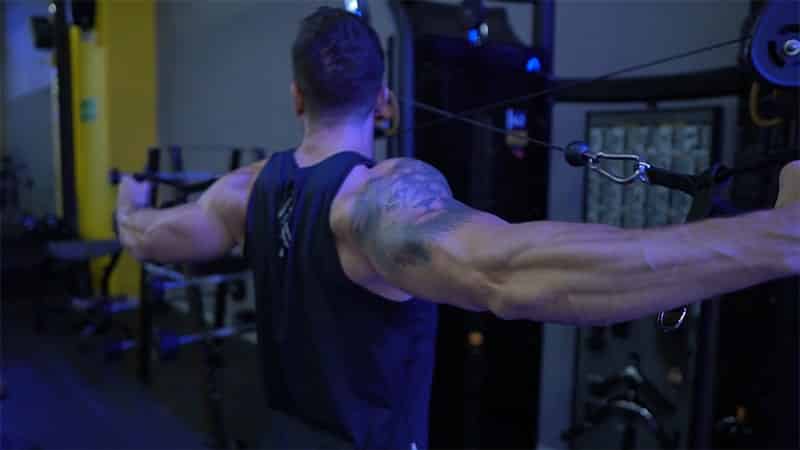
The rear deltoids are a relatively small muscle group that requires isolation in order to be fully activated for muscle growth. In order to effectively work the muscle, you do not need to use a heavy resistance. Whether you are using a cable or dumbbells, you should use a light weight. Focus on the isolation of the rear delt and the avoidance of momentum from other parts of the body when you are doing the cable rear delt fly.
Cable Rear Delt Fly Set and Reps
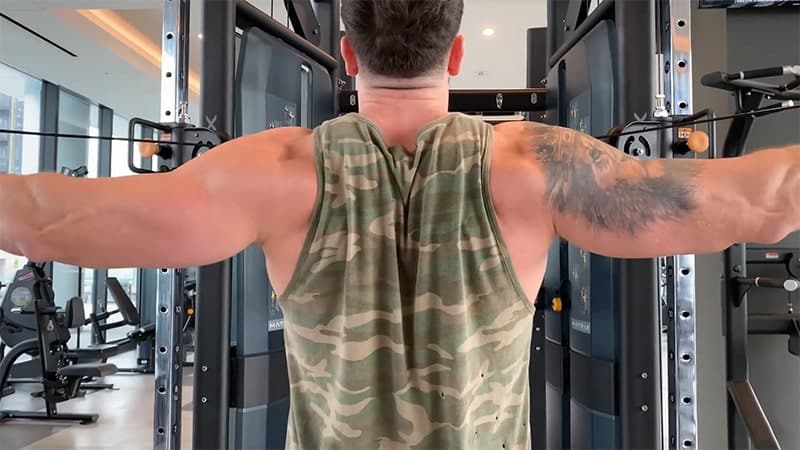
The cable rear delt fly is such a great exercise that you do not need to do anything else to optimally work the rear deltoids. I recommend doing four sets of the exercise with the following rep scheme:
Wrap Up
The cable rear delt fly is the single best exercise that you can do to work the posterior, or rear, head of the deltoid muscle. You should add this exercise to your workouts once a week for four sets, ranging from 25 down to 10 reps. Keep the weight manageable and concentrate on feeling the fibers of the rear delt working on every rep.

